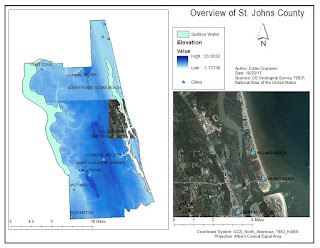Transmission Lines and Finals!
This was a great couple weeks of flexing my GIS muscles! We were working on our final project where I had to investigate the impacts that a transmission line would have in a predetermined area. We were focused on avoiding schools, limiting exposure to environmentally sensitive areas, avoiding as many houses as possible, and figuring a rough estimate of cost. I used a 400 foot buffer on the proposed area for the line to see what lands and buildings might be impacted by the line. I tried my best to use as many tricks that I learned this semester, and I found out that I still have a long way to go. I tried my best to use ArcPy... I wound up just selecting the tools and using them the long way. In the couple weeks off I'm going to check out what codeacademy has to offer for python programming. I also tried using a model to do some of the more repetitive things, but I realized I wasn't quite sure what I wanted done. While it might have saved me some time to use one of those, I had...







